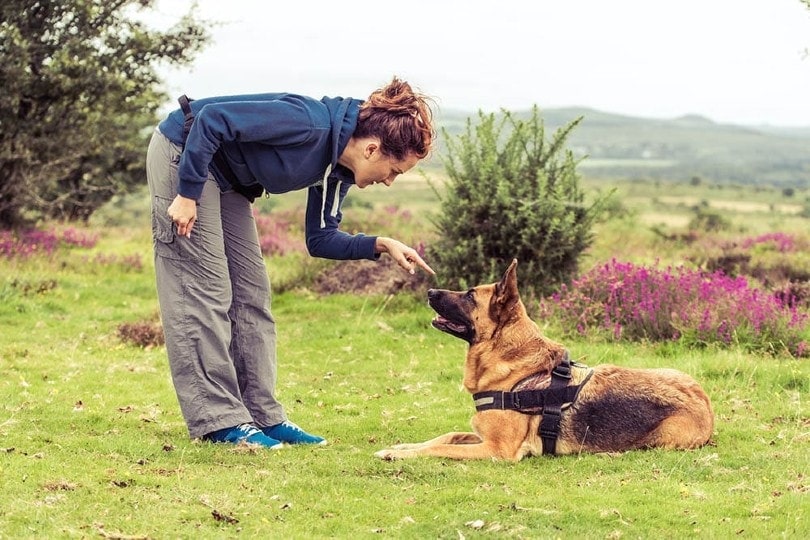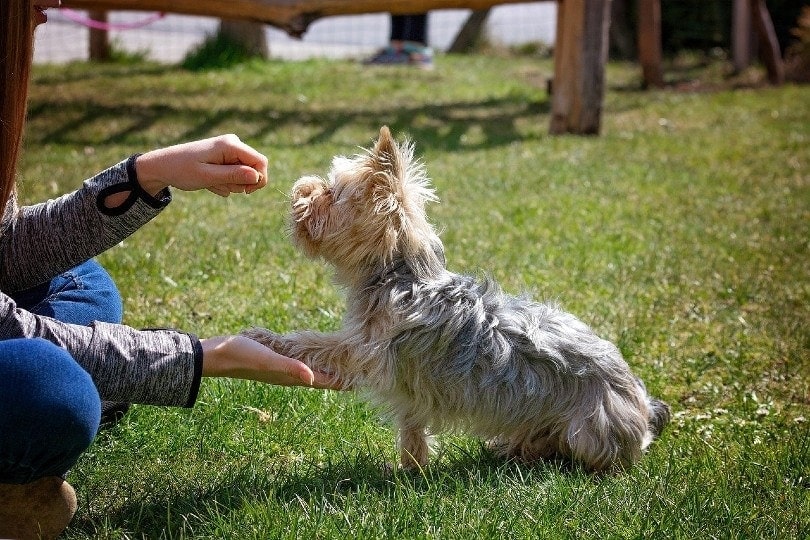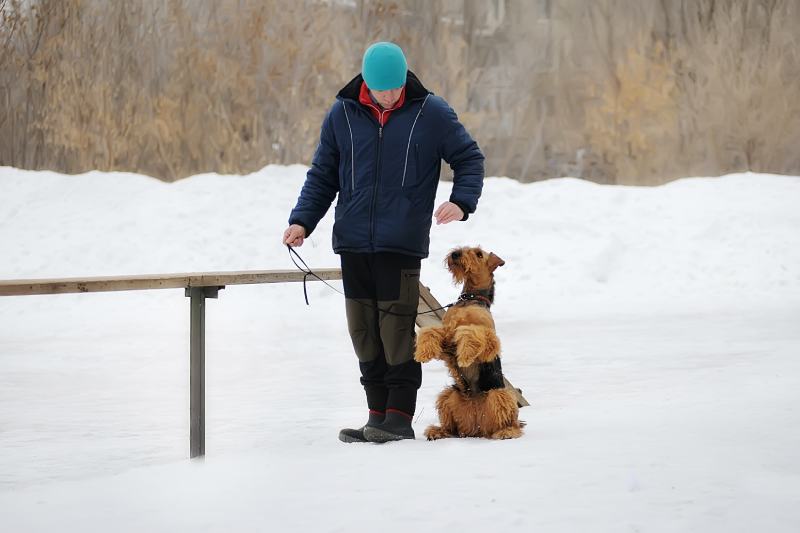How Long Does It Take to Train a Dog? Vet-Reviewed Facts & Tips
Updated on

Are you adopting a puppy soon and are curious about what to expect when it comes to training? Or maybe you have an older dog who needs to learn a few manners and wonder if there’s any hope of him being trainable at his age?
Training is an essential part of dog ownership. Not only does it build confidence and provide mental stimulation for your dog, but it can also strengthen the relationship between the two of you. Training can be a complicated and involved process, though, and it does require patience and time for success.
The short answer is that obedience training is typically a lifelong process, though you can see results on specific commands within days, weeks, or months.
Keep reading to learn everything you’ve wanted to know before you embark on your dog training adventures.
How Long Will It Take to Train My Dog?
This is a question that we get often. People toying with the idea of putting their dog through a training program want to know what sort of time commitment they’re looking at. Unfortunately, there isn’t one answer that will fit every dog. There are several variables at play that will determine the length of time it takes to train your pooch.
Are you going to be the one teaching your dog, or are you willing to put your dog into professional training? What are the training outcomes you’re searching for? Do you want to teach them basic skills, or are you looking to overcome a behavior issue? What’s your dog’s history of learning? Have they been trained in the past using punishment techniques? What is their age?
The most important question to ask yourself is how committed you are. Ultimately, the success you’ll see in training won’t only rely on your dog and his ability to learn. It will rely on your level of commitment, too. If you’re not willing to reinforce the skills your pooch is learning in training, it will be very difficult for them to succeed.
Let’s take a closer look at the different types of training you should be considering for your dog with realistic timeline expectations.

House Training
House training is an important first step of dog ownership if you plan on keeping your dog indoors. This is when you’ll teach your dog where you want him to urinate and defecate, and it is sometimes also known as housebreaking or potty training.
Generally speaking, puppies can be fully potty trained in around four to six months, but it can be done sooner if you’re consistent with taking them outside every few hours.
Another method or tool for house training is using a crate to keep your dog in for a few hourswhen you’re not around to supervise them. Dogs don’t like to eliminate in the same place where they sleep, so if they are confined to the crate, the chances are they will hold the urge until they are able to go outside.
Fully house training a dog can take up to six months and, like any other form of training, will need to be done consistently to see success.
Recall
A super important cue your dog must learn is to come to you when you call them. Use the word “come” and not the dog’s name. You should put an effort into building a strong history of reinforcement with this specific command as it is very important for your dog’s safety. So please do not forget to properly reinforce your dog when they respond to this cue.
Leash Training
Leash training is another essential skill you’ll want to teach your puppy. Since most cities have leash laws, your pup will need to get accustomed to his leash sooner or later. If you begin training when they’re very young, your pup could potentially have proper walk etiquette in around six weeks.
Basic Commands
Next, your puppy will need to learn the basic obedience commands. These commands aren’t only to keep your dog well-behaved but knowing them can keep them out of harm’s way, too. Imagine going on a hike with your dog and coming face-to-face with a mountain lion. If your dog knows the “stay” command, they’ll be less likely to strike to attack the predator.
The basic commands your pup should learn are “heel”, “sit”, “stay”, and “lay”. With two or three short sessions a day, these commands can be taught in around six weeks.

Curbing Unwanted Behaviors
Sometimes, despite all of the effort you put into training, your dog will pick up unwanted behaviors. Things like excessive barking, chewing, digging, aggression, or jumping up can not only be destructive but also have a detrimental effect on your relationship.
These behaviors can be difficult to abolish, so it’s hard to give a precise timeline of how long it will take to eliminate them. It comes down to how long they’ve been exhibiting these behaviors. If your seven-year-old rescue has been chewing and digging his whole life, you’ll need a lot more time and patience to teach them to stop. If a 12-week-old puppy is chewing or digging, it should be much easier to curb these behaviors.
There are several elimination techniques and the specific dog and scenario must be considered, so ultimately, you may need to ask for help from a professional animal behaviorist. This is especially important if your dog is showing signs of aggression. The sooner you’re able to nip that behavior in the bud, the better for everyone.
Tricks
Knowing how to perform tricks isn’t as essential as the other training you’ll need to teach your pooch, but it’s fun for both them and you. Teaching a dog to dance, shake a paw, high five, or even fetch you a drink are great ways to add enrichment to both of your lives. They will love the praise they will receive from you. And you both will appreciate the applause you will get from others when your pouch wows them with the “tricks”.
The length of time it takes to teach tricks will depend on the complexity of the trick. Things like shaking a paw can take as little as ten minutes, while more complex commands like fetching a drink that requires several steps (opening the fridge, grabbing the drink, closing the fridge) will take some additional time.

Final Thoughts
Obedience is a lifelong training process that never really ends. You will never be completely finished training, and the rule “use it or lose it” definitely applies in the world of dog training. Make it a point to run through basic commands and tricks every so often to keep them fresh in your dog’s mind.
Remember, success in training comes from patience and rewards. Never use punishment tactics when trying to teach your dog good behaviors.
See also:
- How to Train a Dog That Is Not Food Motivated: 10 Vet-Approved Ideas
- National Train Your Dog Month: When & How You Can Celebrate
Featured Image Credit: marcin jucha, Shutterstock














